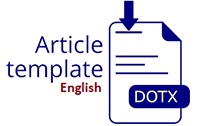ECONOMIC POTENTIAL ANALYSIS RENGKAM ON BATAM ISLAND
Abstract
Full Text:
PDFReferences
Adiguna, A. D., Krisnamurthi, B., & Erwidodo, E. (2022). Competitiveness Analysis of Indonesian Processed Seaweed Exports. Journal of Indonesian Agribusiness, 10(1), 31-39.
Agusta Maharani, Marita and Widyayanti, Rizki (2009) Making Alginate From Seaweed To Produce Products With High Rendement And Viscosity. In: "UNDIP Chemical Engineering Final Project Seminar 2009", Department of Chemical Engineering UNDIP. R. c.12 lt 1. (Unpublished).
Anggadiredja, J.T., A. Zatnika, H. Purwoto, and S. Istini. 2008. Seaweed. Penebar Swadya. Jakarta.
Aslan, L. M. 1998. Seaweed Cultivation. Yogyakarta: Kanisius Publishers.
Basmal, J., Tazwir, Murdianah and Kusumawati, R. 2013. Making Alginate from Sargassum Seaweed. Penebar Swadaya. East Jakarta. Page: 6-7.
Dhewani, Nurul, Bambang Hermanto, and Widodo. 2009. Report on Community Based Fisheries Monitoring (CRELL) in Batam Regency in 2008, Jakarta: CRITC COREMAP II.
https://doc.batam.go.id/RKPD%20Kota%20Batam%20Tahun%202019.pdf
https://www.psychologymania.com/2013/09/klasifikasi-dan-deskripsi-sargassum sp.html accessed on October 12, 2022 at 20.34 WIB.
Jayanudin, A.Z., F. Lestari, and Nurbayanti. 2014. Effect of Temperature and Solvent Ratio on Yield and Viscosity of Sodium Alginate from Brown Seaweed (Sargassum sp). Journal of Process Integration. 5(1):51-56.
Kadi, A., and Atmadja, W.S. 1998. Algae seaweed, reproduction, production, cultivation and post-harvest. Indonesian Natural Resources Potential study project. Jakarta: Center for Research and Development of Oceanology. Indonesian Institute of Sciences.
Annual Report of Marine, Fisheries, Agriculture and Forestry Agency of Batam City 2011.
Mc. Hugh, D.J. 2008. Production, properties and uses of alginates in the production and utilization of products from commercial seaweeds. FAO Corporate Document Repository. http://www.fao.org/ docrep/006/ y4765e08.htm. 45 pp. Accessed on January 15, 2008.
Mulyadi. 2005. Marine Economics. Jakarta: PT Raja Grafindo Persada.
Pandjaitan, Rosmawati Hilderiah. The Influence of Batam Island Industrial Estate Development on Population, Employment, and Social Life Problems in Batam Island, Thesis - Development Studies, ITB, 2000, at http://digilib.itb.ac.id/gdl.php?mod=browse&op=read&id=jbptitbpp-gdl-s2-2000 rosmawaty-623-developers, accessed March 8, 2013.
Qodriyatun, S. N. (2013). Improving the Welfare of Coastal Communities in Batam City through Community Empowerment. Center for Assessment, Data and Information Processing (P3DI) Secretariat General of DPR RI. (Aspiration Journal), 4(2).
RACHMAT, R., T. Murniasih, A. Rasyid, and F. Untari. 1999. Research on Marine Natural Products Anti-degenerative Test of Marine Algae. Oceanology Research Center of LIPI, Jakarta. 27 pp.
Wibowo, H., Bahri, E. S., & Harto, P. P. (2016). Optimizing the Role of Batam Fishermen Community in Economic Development. SOCIO DIDACTICS: Social Science Education Journal, 3(1), 92-104.
Wulandari, I., & Situmeang, S. (2022). The Effect Of Sargassum Sp Seaweed Sales On Community Economic Growth In Bintan District Sasah Bay In 2022. Eqien-Journal of Economics and Business, 11(03), 1515-1521.
Yende, S. 2016. Therapeutic Potential and Health Benefits of Sargassum sp. Gale Health and Medical Collection Journal Pharmacognosy Reviews 8(15): 12-21.
Yunizal. 2004. Alginate Processing Technology. Research Center for Product Processing and Socio-Economic of Marine and Fisheries. BRKP. Jakarta. Page: 66.
DOI: https://doi.org/10.36987/ecobi.v11i1.5481
Refbacks
- There are currently no refbacks.

